Shedding is something hair loss sufferers are all-too familiar with. But when it’s time to begin a treatment, you expect positive results. Not months of more aggressive hair loss. Understanding why it happens on treatments, how long it will last, and what you can do about it, will play a big role in whether or not you ultimately have success. Shedding is one of the biggest complaints we receive from our users, and the level of concern heightens when its seen after starting a treatment like Finasteride or Minoxidil.
Shedding on Hair Loss Treatments is Normal
Believe it or not, shedding after starting a treatment is fairly common. In fact, more often than not, our users report increased loss a few weeks to a few months after starting Propecia or Rogaine (or both!). But what a shock it can be to those who don’t expect it. They finally take that dive into the daily commitment of fighting their hair loss. They’re finally ready to do something about it, and as hopeless as things may seem, they put all their trust in the clinical data. They have a few weeks of feeling a little better about things, hoping for the best, knowing they’re doing all they can … and then something goes wrong.
They actually start to *lose* hair.
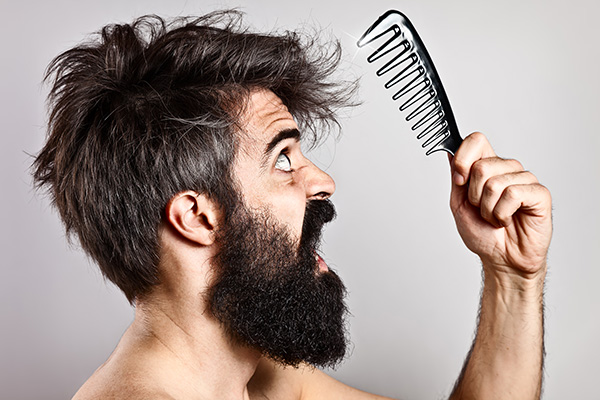
Shedding is Normal
At least that’s how it looks. Instead of going forward, they’re going backwards. The more level-headed shedders decide to wait it out a few days, only to see it continue… and continue… and continue. The rest panic, or just throw in the towel entirely. They decide they are not “responders” to the treatment, that the treatment doesn’t work, or quite simply that God has forsaken them. Fortunately, they’re wrong on all three counts…
What exactly is Shedding?
First off: shedding is not actually “losing hair”. This is one of the most important things you can glean from this article. Shedding is in fact just the transition of follicles from growth phase to resting phase. They’re not dead. They’re not gone. They in fact “go to sleep”, with full intention to return several months later. Hair follicles work in cycles. Even the person not losing his or her hair goes through these same types of cycles. The hair will grow for awhile, and it will rest for awhile.
In the case of someone not using any treatments, but experiencing Androgenetic Alopecia (Male or Female pattern baldness), shedding is typically that growth/rest cycle, but with the addition of “miniaturization”. What does this mean? It means each time those hairs go dormant and come back, they come back weaker, thinner, and less pigmented. Ultimately a “net loss” of hair results.
There are theories out there as to why hair seems to go “all at once” for those losing hair, but they are still just theories. The most common one is that those with Androgenetic Alopecia see more of a synchronization of dormancy. Meaning – more hairs go dormant at the same time, ejecting the existing hair and shutting down temporarily.
Either way, the moral of the story is the same: Shedding is not losing hair. Its dormancy. And it is up to you whether those hairs cycle back in thicker and stronger, or thinner and weaker. So how do you make sure you’re on the winning team? DHT inhibiting, or growth stimulating treatment are the key.
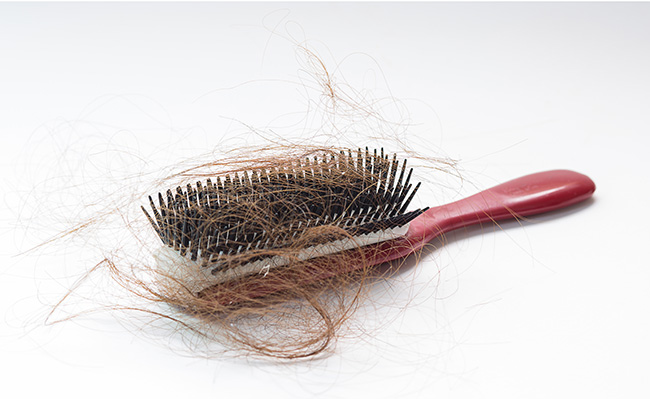
Shedding is not losing hair. It’s dormancy.
Shedding because of my Treatment?!?
It’s possible, and as mentioned above, rather common. It’s actually the most common reason why people think hair loss treatments don’t work. If you start a new treatment like Rogaine or Propecia, you probably will shed, but the amount of hair shed varies from person to person. It has long been suspected that there is an increase in shedding in the first 3 months or so.
Recently, some studies using a digital phototrichogram proved that there was indeed a quantifiable increase in shedding and a corresponding loss of hair density in the first 3 months of minoxidil use. However, by the 6 month point the subjects were shown to have regrown the lost hair and had increased hair density. By 12 months after starting minoxidil their hair density was much improved. The diameter of the hair fibers was thicker than at the start of treatment and in comparison to controls who did not receive treatment.
This small study proves that there is an initial, temporary shed phase when first starting even women’s hair loss treatments.
How long will it last?
Shedding is temporary. If the individual continues their treatment consistently, despite the feelings of despair or hopelessness, shedding will end and the lost hair should be replaced.
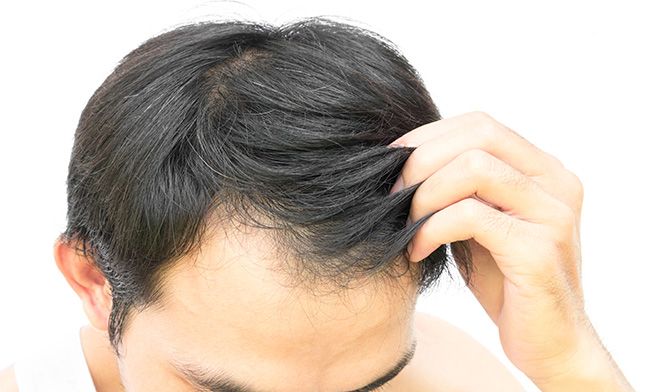
Shedding is Temporary
Why does it happen?
Although we do not know exactly why shedding occurs, the most likely explanation is due to how the hair follicle “organ” operates. Hair follicles are relatively inflexible in their anagen (hair-producing) state. In response to additional stimuli the growing hairs may be able to increase their growth rate or increase the diameter of the hair fiber produced a little, but it is not possible for a hair follicle to undergo big changes in size while producing hair fiber.
What ends up happening is that the follicle gets hit with a growth stimulant like Minoxidil and is given a very strong signal to change size (expand) and increase activity. The rule of the follicle is that it must then stop, and start over. The existing hair is ejected, the follicle goes into dormancy. It begins to restructure its processes to produce a thicker, stronger hair that can produce a bigger (thicker) hair fiber.
Shedding is a sign that the Treatment is Working
It may sound counter-intuitive, but this is one of the most important truths you’ll learn on this site: Shedding means the treatment is working. When Rogaine is applied to stimulate hair follicles, the follicles must first regress. They shed the old fiber, reprogram themselves into larger follicles, and start producing new, improved hair fibers. This inevitably leads to a temporary shed phase. Simply put: you’re seeing your hairs respond to treatment. Its unfortunate that the first sign of new hair growth is the process of “losing” even more of it, but that’s the way it works, even with Antiandrogens, DHT inhibitors, and even Androgen Blockers.
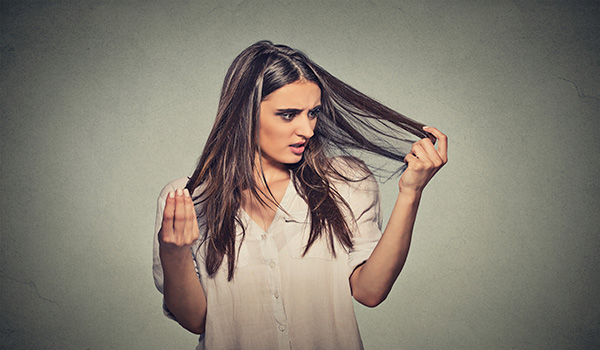
Shedding is a Good Sign
Every Type of Hair Loss Treatment Can Cause Shedding
There is a belief among some dermatologists that an initial shed phase when first starting to use a treatment for hair loss is inevitable regardless of the treatment used. Because of the hair follicle’s inflexibility in changing the nature of hair growth mid stream, for any drug to promote hair growth it must involve hair follicles entering telogen (dormancy) to rearrange themselves into a larger follicle under the influence of the drug. This is why you’ll often hear that if you’re on a legitimate hair loss treatment, you should expect a shed.
Bob on website.com told me the shedding will NEVER STOP
There are a few who claim that using treatments like Propecia and Minoxidil can cause a persistent shedding that lasts longer than the first three months.
While there is no hard research evidence to support these claims, it is always possible that an individual may have an adverse reaction to a drug. We are each unique because of our different genetic make up and the different environments in which we live.
Likewise, there can also be confounding factors. For example, the owner of this website (me) experienced shedding for a full 11 months after starting Propecia. This was when I was a hair-loss-newbie however, and nobody had told me about the mandatory use of Nizoral Shampoo, or a similar Ketoconazole-based shampoo, 3x a week. It was the excessive inflammation going on in my scalp that was responsible for the continued shedding. Once I got that under control, Propecia was freed up to do its job, and my shedding stopped.
In general, it is most likely that many of the claims for persistent shedding actually come from those who are experiencing the expected shedding in the first 3 months, have not been consistent with their dosages, or have been continually adding or taking away from their treatment regimen.
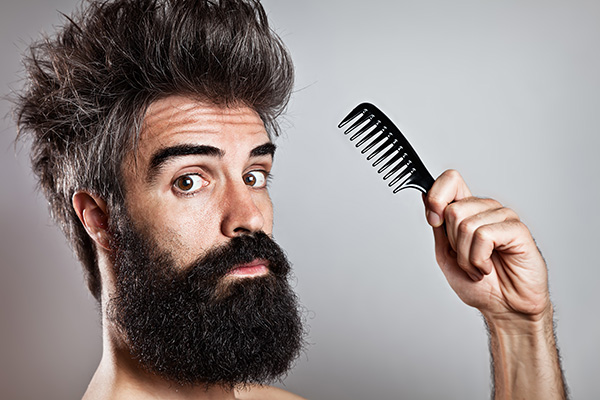
This guy rode out his shed.
But I think I have Telogen Effluvium!
Telogen Effluvium is one of those strange concepts in the “hair loss” world. It’s thing everyone wishes they had, because it’s associated with a guaranteed lack of permanence. Many hair loss sufferers with traditional male or female pattern baldness want to believe they have Telogen Effluvium (TE), because it provides a glimmer of hope that the whole ordeal is just temporary. Unfortunately, Telogen Effluvium, by definition is a condition that occurs in response to serious traumatic shock to the system as a whole. It is not a something that will happen without any abnormalities going on in your life.
Things like chronic debilitating stress, extreme malnutrition, certain medications, and chronic serious illness are the most common causes. There is no way to know for sure how long shedding will last with Telogen Effluvium. Increased shedding occurs in response to a trigger factor. If exposure to the trigger is brief and there are no other contributing factors then the shedding may last for around 3 months and then recover so that 6 months later the hair is pretty much back to normal.
However, if the trigger factor hangs around, like chronic stress or illness, then the shedding may persist. The hair follicles can get into a habit of short, truncated growth cycles, producing short hair that falls out after a few months. This results in a high shed rate – although the hair loss on the scalp need not progress much.
Shedding Versus Hair Loss: Net Loss
If you walk away with one thing from this article, let it be this: Counting hairs does not indicate anything. The appearance of the shed hair and the rate of shedding is not very important, although it may be disturbing to see. Everyone sheds hair daily whether affected by hair loss or not. You can shed up to 100 scalp hairs a day without having any scalp hair loss. A few people may shed more than this but still not develop baldness.
To understand the development of hair loss the main factor to consider is the rate of hair growth and replacement, not so much the rate of shedding.
Some people have a high rate of shedding but also a high rate of hair growth. The result is no net loss of hair on the scalp. Some people have a low rate of hair shedding and a low hair regrowth rate. The result is similar: no net loss of hair.
The problem comes when someone sheds hair at a faster rate than it is replaced. This is the scenario where baldness develops.
Guys, you probably know a girl or two who sheds like crazy, but has a thick head of hair. This is an example of high growth and high shed rate, balancing out. Conversely, you can have a normal or even a low shed rate and still develop baldness. If the hair is being shed faster than it regrows then alopecia will develop. So the amount hair shed each day/week/month is a poor diagnostic indicator of hair loss. To define alopecia you must look at what is left on the scalp. Not what’s laying on your floor.
About Article Author
Kevin Rands is the Founder of HairLossTalk.com and President of Online Health Networks, Inc. a Miami based corporation providing consumer health education on the web. He is also the Founder and Principal Writer for DisrupterDaily.com, an online publication on disruption of health and tech sectors.
View More Articles



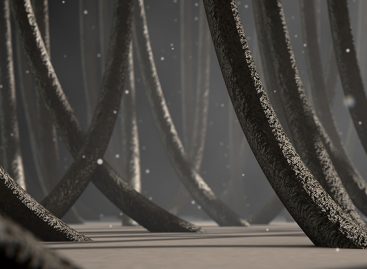

Hey! Im on minoxidil only for a bit more than a month now. Been shedding like crazy for about 2 weeks. My scalp is a bit flaky but nothing out of control yet. You talk about nizoral. My dermatologist did not mention that to me. Is it mendatory ? How does it help exactly ? Thanks a lot
Hi Jessica. Couple issues at play here.
1) Minoxidil can cause irritation and inflammation for some people. If it does not do this for you then you’re all set. If it does, consider trying some alternate types of minoxidil that don’t have as much PPG or alcohol.
2) Nizoral addresses a different type of inflammation. It’s the type seen from the hormone processes going on in the scalp, which lead to thinning hair in the first place.
This inflammation is often not felt, but can also be extremely irritating and itching – even painful for some people when they try to part their hair. Nizoral helps with this. Its an anti-inflammatory and has mild antiandrogen effects. So whether or not you have minoxidil irritation, and whether or not you have the androgenetic alopecia itch – Nizoral is recommended as its a shampoo that actually can help address the effects of androgens in the scalp. As such its considered a mandatory part of any thinning hair treatment regimen. The fact that your doctor was not educated on this should not dissuade you from using it.
If I dont feel any inflammation…can it still be inflammation ? My scalp doesnt seem red or anything. How do I know its ”normal” shedding Vs bad shedding that wont help ? thanks!
Hi There,
I actually decided to take Nizoral on my own without any doctor’s recommendation and it worked like. magic. I went from losing over 100 hairs a day to 50. I use the medicated 2% now and have my shedding under control. I would start Nizoral before Rogain treatment
Hello, thanks for your article. I used something like Minoxidil before. I forgot the name but my scalp becomes red in that time. After i try to wear hair replacements, i got the inflammation problem, the same problem as before, How could i do now? IT IS MY SCALP PROBLEM???
really good!https://www.hairlosstalk.com/
Hello, thanks for this article
Im 20 year old boy. I loose almost 50 hairs a day, sometimes even more than 50 feom last 2 months. Hairs donot fall from perticular part, its from my overall head. some thick hair and also some weaken hairs falls from my head. When i observe the fallen hair, there a tiny white point root. No one in my family is bald.
Tell whether this is normal?
Whether this is a hair shedding or hairloss?
Suggest me medications if needed
I started experiencing hair loss at the age of 17. I would advise you to be proactive about it and get on a minoxidil regimen at least. Visit a good dermatologist before starting any medication. He can potentially tell you other areas for improvement such as your scalp or vitamin supplements. Depending on the extent of your hair loss, your dermatologist may also recommend you Finasteride/Dutasteride.
50 hairs or more a day is normal, Sam. Don’t worry. Everyone sheds hair every day. Please relax and don’t worry!
Have been using about 8 months. Noticeable improvement, but last few weeks have been shedding like a cat and noticeable thinning. Any ideas why?
Very helpful article thanks for your help.
Hello, thanks for the article. I am 26 years old , male. I have started this minoxidil treatment 3 weeks ago along with DHT inhibitor pills. As prescribed by the doctor. But there has been a sharp increase in hair fall since the use..of minoxidil. I loose around 35 hair strands per day compared to 12-15 before the use.
Is this mean that minoxidil is working or should I stop the same
PS : I don’t feel any ithcing after the application of the solution
Thank you for this article it was very interesting. I’ve been shedding excessive amounts for over two years and it looks like it’s chronic telogen effluvium three weeks ago I started all minoxidil 1.25 mg I just wondered if you had any views about all minoxidil and do you think it needs to be a permanent thing?
(Using ipad, so spelling/grammer may be rubbish lol)
Do you ‘have to use’ nizoral’? I have been on and off propecia for 10 years… I do respond but money has been the main factor for when I use or not. I usually used for a year then a year off. I did notice growth and little shed, so take heart the worriers (spelling) about shedding. It never that much. My question is that I now only wash my hair when I dye it about every two month. (I am clean!) I now take propecia and also use regaine. I notice this time that I do get itchy but ignore it. I thought mybe it is just the folicles getting ready for the fight now I am attacking with two treatments.
But I want to ask… do you have to use nizoral?
well I’m not saying I disagree with your article but minoxidil significantly thinned my hair out. it seemed to be working fine, took a break of 6 weeks, I then had a baď reaction with shedding or shock loss & my hair never recovered. 12 months later I’ve gone from having a good head of hair to a much thinner head of hair. I took it as I wanted to maintain the thickness at my temples, now my hair is thinner all over.
Recently I began dutasteride full force. I have been on minox and finasteride for many years. I was slowly losing ground, but never having a super scary shed. Until this month. I went from taking dut 3X/week to every day. I am also doing Nizoral 1% Shampoo several times/week, and Minxo 5% 2X/day. Going to daily use has caused my left temple to recede at least 1/2 inch in the past 45 days. I am SO hoping that this will turn into regrowth!
I am a female 58 yrs old and have androgenetic alopecia. I have been dealing with hair loss for 4 years. I have been using minoxidill but was wondering if finasteride would help, how much to take and how safe is it
I was just wondering whether “shedding” only refers to actually losing hairs in the showe, on the pillow etc or can it also refer to an increase rate of a receding hairline for the first few months after starting finasteride? This is what has happened to me after two months
Is it normal for the shedding to start about 5 months into the treatment? My hair seemed to be responding pretty well to it and I wasn’t shedding. My hair just seemed to be growing. Into the 5 1/2 month mark, the shedding started.
Hi, I am taking finasteride for 3 months, and now I’m experiencing shedding, I stopped washing my hair with water, afraid of loosing more hair, now my scalp has dirt and hair has lot of dandruff, does the dandruff cause more hair fall ?
Can I shave my head and start washing 3x times a week ???
I’ve been on dutasteride for around 7 months and have done nothing but thin out and temples receding every day…is this normal? Should I continue or is this a sign it’s not working?
Has anyone noticed development or worsening of tinnitus when on Minoxidil? I have noticed mine worsening over the past few weeks and I only recently started Minoxidil about a week before my T worsened so I’m curious has anyone else had this? and if so, did it eventually get better as your body got used to using the min?